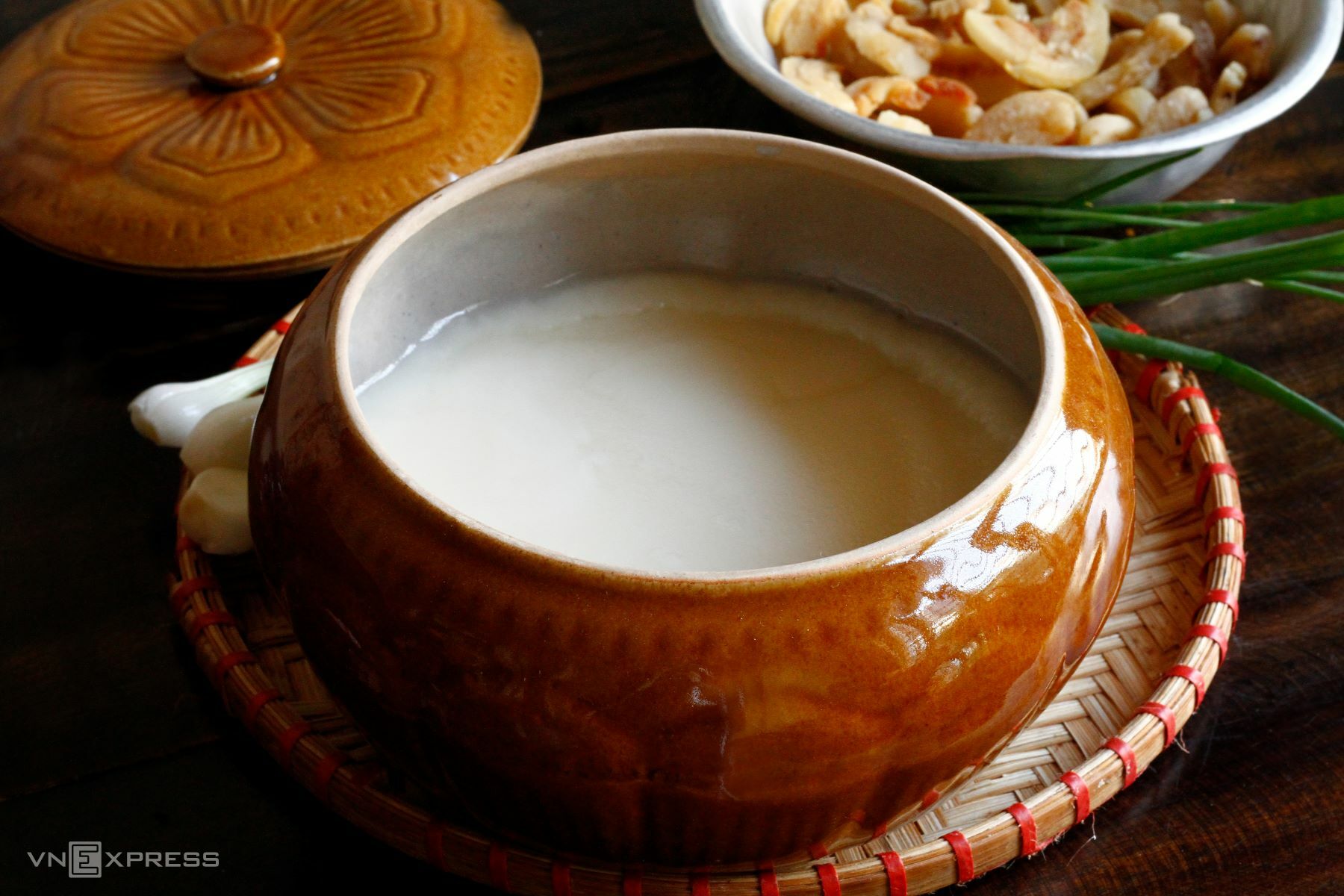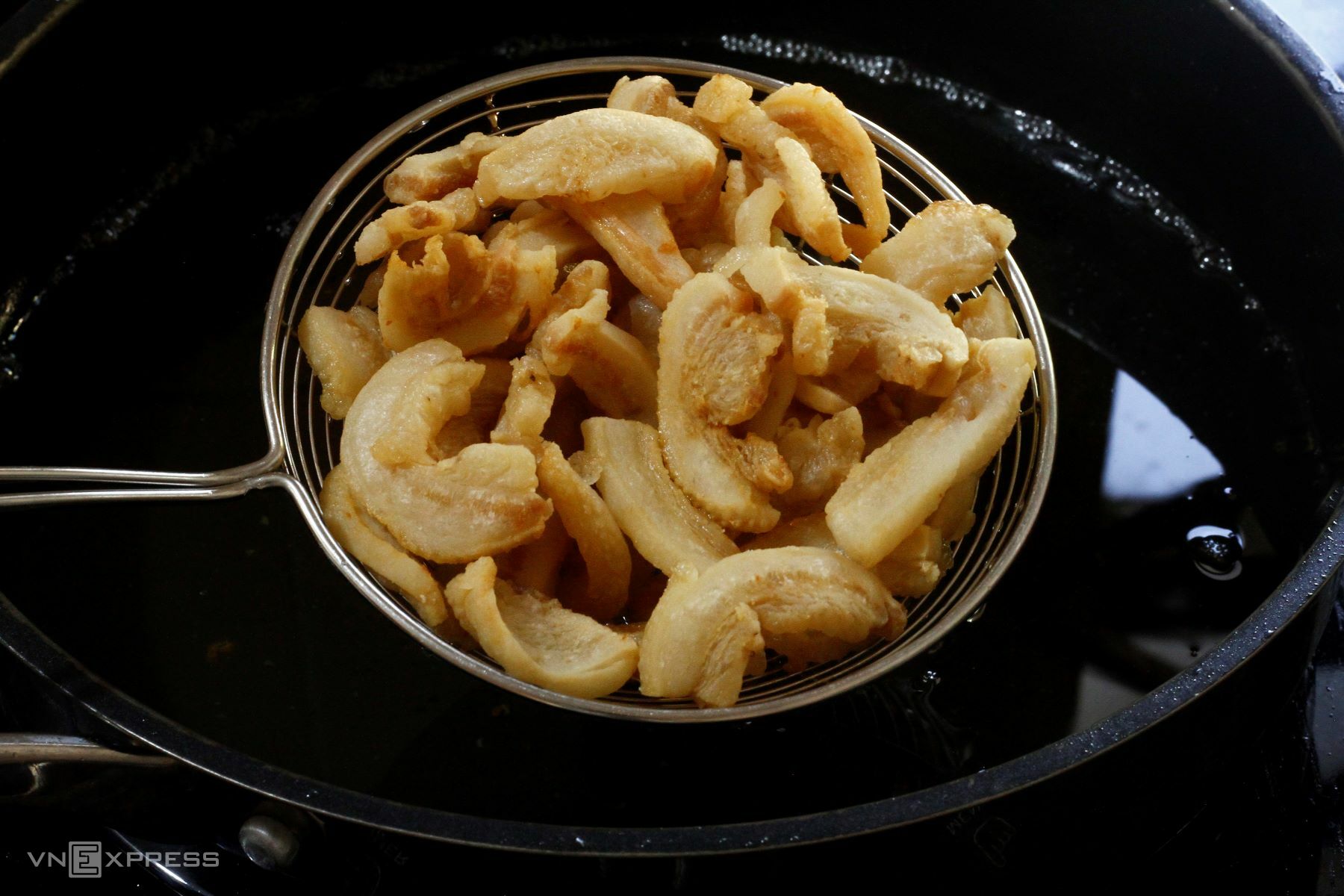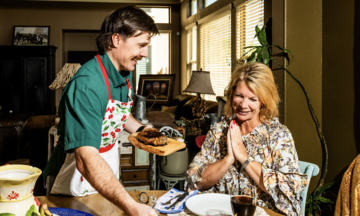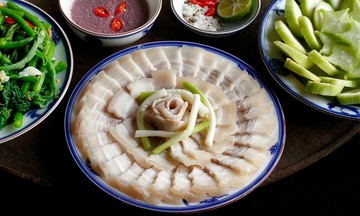Lard is more than just cooking fat; it's a foundational flavor in Vietnamese cuisine. Before vegetable oil became commonplace, lard was used in most stir-fries and fried dishes.
Traditionally, rendered lard is strained, cooled, stored in a ceramic container, and placed in a dry, cool, and dark place. Many families still render and store lard for later use. However, the strong smell of stored lard can be off-putting.
 |
Lard enhances the flavor of many dishes. Photo: Bui Thuy |
All fats, including vegetable oils, have a limited shelf life. Over time, lard undergoes lipid oxidation, where fat molecules react with oxygen, producing compounds like peroxides, aldehydes, and ketones. This process causes the lard to develop a strong odor and lose its desirable flavor.
A food chemistry study published in Food Chemistry (UK) found that animal fats stored at room temperature for several weeks showed a rapid increase in peroxide value, a sign of fat degradation.
The rate of this degradation depends on storage conditions. Exposure to light, high temperatures, and air accelerates spoilage. Conversely, storing lard in an airtight container in a cool, dark place extends its shelf life.
According to the World Health Organization (WHO) and the US Food and Drug Administration (FDA), oxidized fats not only lose flavor but also generate free radicals. These free radicals can damage the liver and cardiovascular system if consumed regularly.
 |
Cracklings can be used in various dishes. Photo: Bui Thuy |
Refrigeration is a convenient and safe way to store lard. Nutritionists recommend storing lard in a sealed ceramic or glass container in the refrigerator. If refrigerated, lard can be safely used for one to two months.
Many cultures preserve animal fats for cooking. The French and Germans use goose and duck fat, and people in some rural areas of China store lard in jars for the winter.
The rendering process is crucial for long-lasting, flavorful lard. Undercooked lard spoils quickly, while overcooked, burnt cracklings contaminate the lard, affecting its taste.
The best method involves blanching, cleaning, and then rendering the lard with a little water over medium heat, stirring occasionally. When the fat starts to melt and the cracklings turn slightly golden, add a splash of white wine with the lid off to allow the undesirable odors to evaporate with the alcohol. This also accelerates the rendering process.
Strain the lard multiple times. The initial, whiter lard is suitable for dishes like steamed buns and dumplings. Later batches, which are more yellow, last longer outside the refrigerator. Don't wait for the entire batch to finish before straining. Discard any lard that changes color or develops a sour or unusual smell.
The National Institute of Nutrition recommends a balanced intake of both lard and vegetable oil for optimal health. Lard is rich in minerals and vitamin D, promoting calcium absorption. It also plays a role in nerve cell membrane structure and aids in absorbing fat-soluble vitamins like vitamin A, benefits not found in vegetable oils.
The ideal ratio of vegetable oil to animal fat is 50:50. For children under 1, the ratio should be 70:30 in favor of lard. Children over 1 can consume a 50:50 ratio.
Bui Thuy












